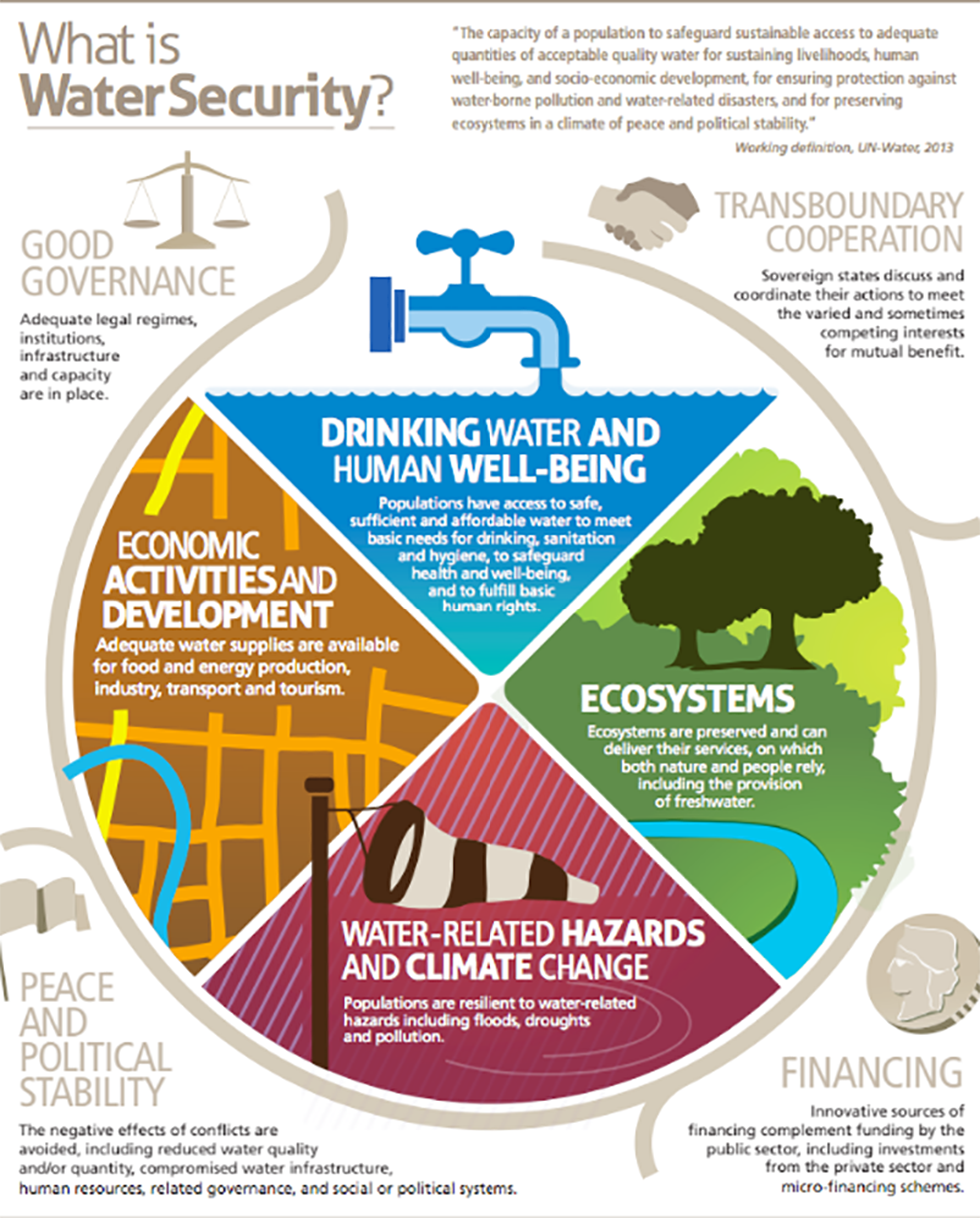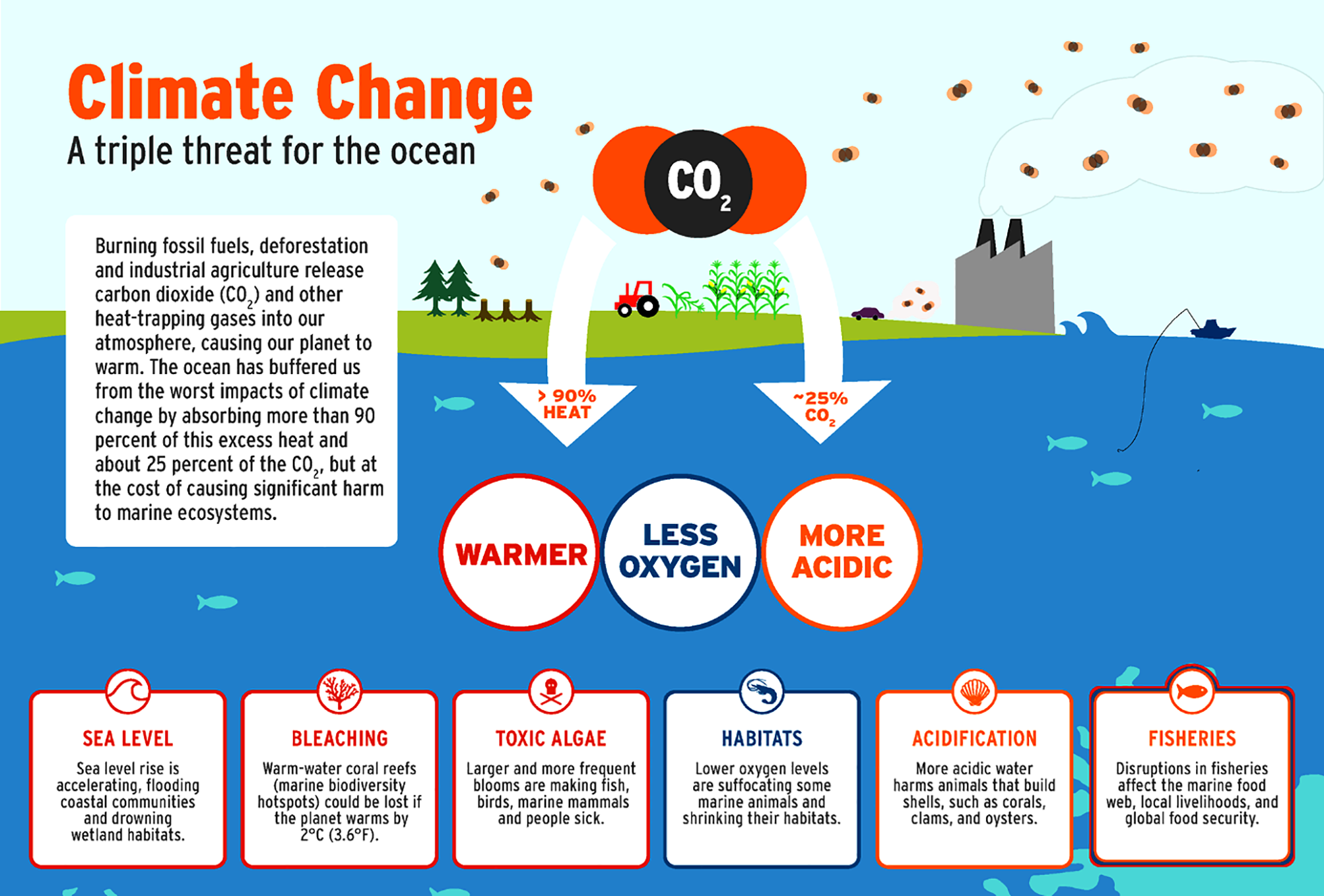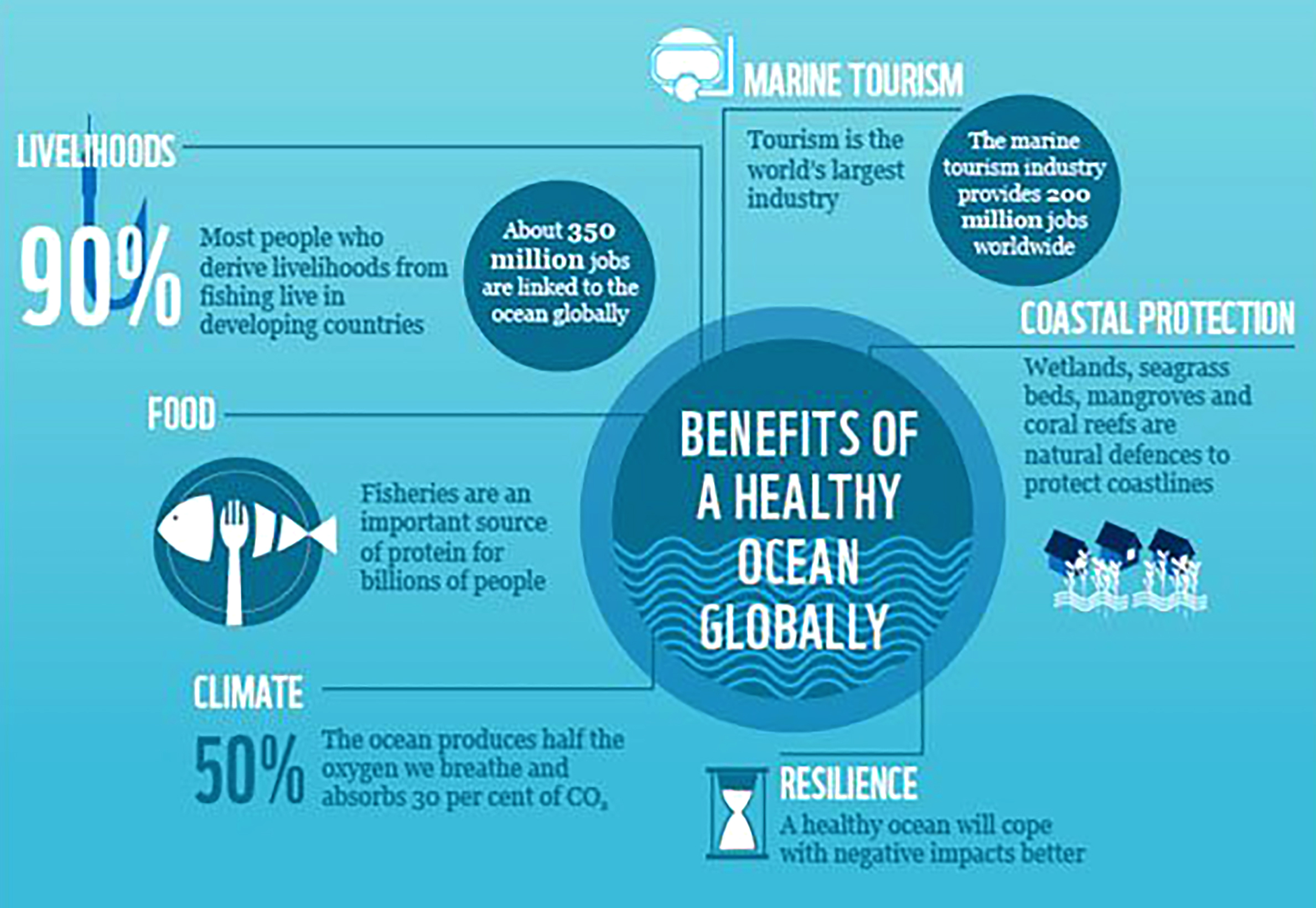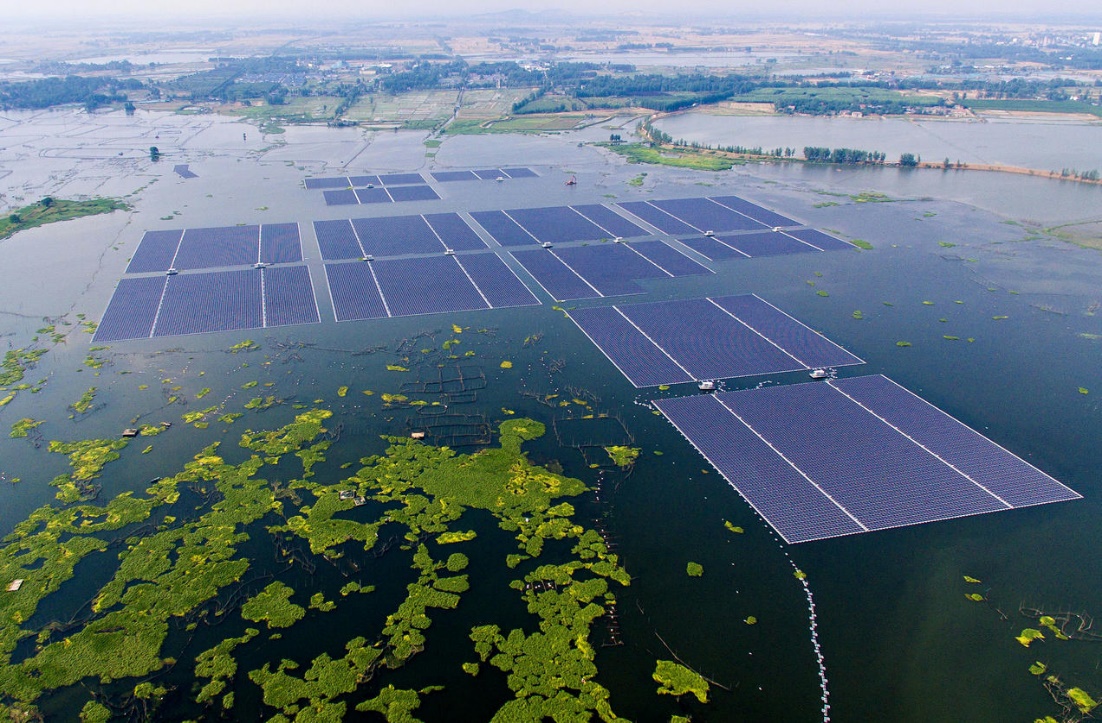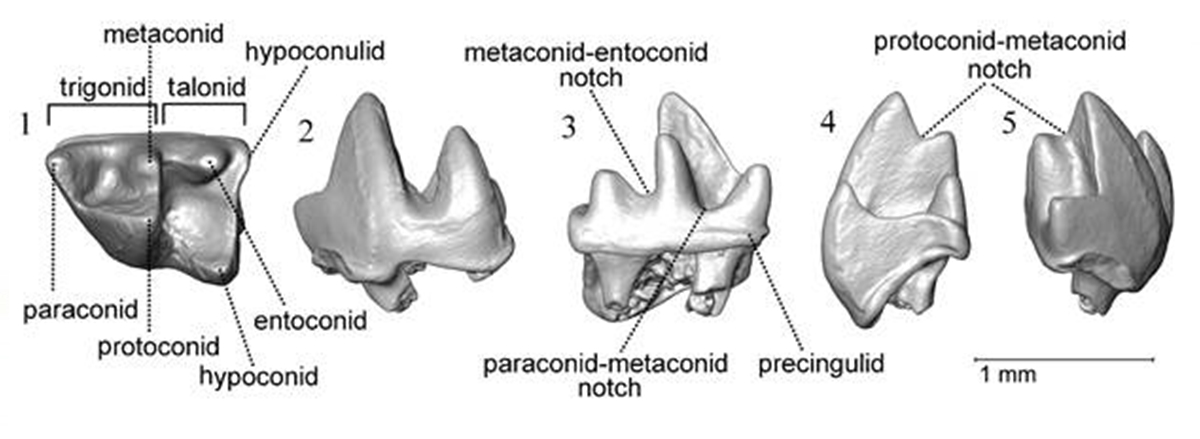Biodiversity & Environment
Water Security in Asia
For Prelims: Water Resource, Rain Harvesting
For Mains: Challenges faced due to water security and what steps could be taken to tackle it
Why in News?
Recent findings by the scientists of southeast Asian countries show that the urban water security in Asian cities including Delhi is in decline.
- The global mega cities like Tokyo, Shanghai, and Delhi are the symbol of the rise of the new Asian century as they are the three biggest in the world, engines of economic growth, producing billions in economic activity for their residents and the world.
- But they have a serious problem i.e., there is not enough fresh water available per person for their daily needs.
What are the Issues?
- Amount of Freshwater:
- In Asia, there is half as much freshwater as there is globally.
- Low Water Efficiency:
- Despite the comparatively large amount of water used in agriculture production, water efficiency is also among the lowest in the world, and low water productivity results in low crop yields.
- Urban Pollution:
- Water problems are common in many big cities. Degradation of the environment has been caused by population and economic growth due to industrial activities and discharge of industrial waste in water bodies.
- Existing water resources just cannot meet the rising demand.
- Climate change:
- Due to climate change, extreme weather events like droughts and floods are becoming more frequent, which exacerbates the problem.
- Examples:
- Over-exploitation in Bangkok, Thailand, has severely reduced groundwater levels, causing land to subside.
- Water sources around the city are also polluted due to the direct discharge of domestic sewage into drains and canals.
- Similarly, Bangkok’s inadequate drainage capacity and its location in the Chao Phraya River floodplains make it susceptible to flooding.
- Hanoi, Vietnam, is one of the fastest-growing cities in terms of GDP growth, contributing more than 19% of the country’s total GDP.
- The repercussions of this growth are felt directly in its polluted lakes and rivers due to wastewater from residential and industrial areas.
- Madaba in Jordan is a water-scarce city.
- Although 98% of the city's population has access to water, residents are often forced to rely on alternative sources of storage such as large tanks or private water vendors to meet their needs due to inconsistent water supplies.
- Over-exploitation in Bangkok, Thailand, has severely reduced groundwater levels, causing land to subside.
What are the Suggestions?
- Policy Intervention:
- Practical interventions can help, like the integrated urban water security assessment framework. It can be used to assess the full spectrum of a city’s urban water security by considering the driving forces that can impact it.
- Leveraging Technology:
- Researchers at Thailand’s Asian Institute of Technology (AIT) have developed WATSAT, a web-based water security assessment tool that can evaluate where cities stand by measuring five distinct aspects of urban water security: water supply, sanitation, water productivity, water environment and water governance.
- Local Solutions:
- Cities that embrace new ways to manage water can improve the livelihoods of their populations and support continued growth. For example, Bangkok has adopted incentives for water management to include the treatment of wastewater at the household level before being released into public water sources.
- As a part of Bangkok Vision 2032, the programme will also monitor the chemical properties of water in canals and improve cleanliness to prevent illnesses and safeguard the environment.
- Jordan’s water action plan includes building decentralised infrastructures such as rainwater harvesting or wastewater treatment to supplement water supplies. Financial or tax incentives to encourage businesses to reuse treated wastewater instead of freshwater are also managing demand and efficiency.
- Cities that embrace new ways to manage water can improve the livelihoods of their populations and support continued growth. For example, Bangkok has adopted incentives for water management to include the treatment of wastewater at the household level before being released into public water sources.
- Planning and implementation:
- There is an urgent need for plans to stop water supply losses due to leaking pipes which will also increase productivity.
- These include enhancing financial sustainability through water tariffs, installing new metering devices, attempting to detect unauthorised usage in water pipelines, and using monitoring systems.
- The strategy also entails allocating water to repair important ecosystems like forests, marshes, and rivers for improved conservation, which is another instance of how nature-based solutions play a role.
Biodiversity & Environment
UN Oceans Conference 2022
For Prelims: UN Oceans Conference 2022, Ocean Ecosystem, World Ocean Day, Decade of Ocean, Climate Change
For Mains: Conservation, Environmental Pollution & Degradation, Government Policies & Interventions, Significance of the Oceans, Initiatives to Protect the Ocean
Why in News?
Recently, the UN (United Nations) Ocean Conference 2022 was held to ensure global cooperation towards protection and sustenance of the Ocean ecosystem of the world.
- The conference was co-hosted by the Governments of Kenya and Portugal.
- Minister of Earth Sciences led the Indian delegation at UN Ocean Conference. India promised to provide science and innovation-based solutions for the implementation of Goal 14 through partnerships and environmentally friendly.
- The UN Ocean conference 2022 is aligned to SDG (Sustainable Develpment Goals) 14 'life below water' and stresses on the critical need for scientific knowledge and marine technology to build ocean resilience.
What are the Key Agenda of the Conference?
- Moratorium on Deep Sea Mining:
- Push for a moratorium on deep-sea mining of rare metals needed for a boom electric vehicle battery construction.
- The digging and gauging of the ocean floor by machines can alter or destroy deep-sea habitats.
- Carbon Sequestration:
- Focus on carbon sequestration to boost the ocean's capacity to soak up CO2, by either enhancing natural sinks such as mangroves or through geoengineering schemes.
- Blue Deal:
- A “Blue Deal” was promoted to enable the sustainable use of ocean resources for economic growth.
- It includes global trade, investment and innovation to create a sustainable and resilient ocean economy.
- Focus on blue food to ensure marine harvests from all sources are sustainable and socially responsible.
- High Seas are Unregulated:
- No comprehensive legal framework covers the high seas. Oceans cover some 70% of the earth’s surface and provide food and livelihoods for billions of people.
- Some activists refer to them as the largest unregulated area on the planet.
- Threat to Ocean:
- Threats to the oceans include global warming, pollution (including plastic pollution), acidification, marine Heatwaves etc.
What are the Initiatives to Ensure Sustainable Ocean Ecosystem?
- Decade of Ocean Science for Sustainable Development:
- The UN has proclaimed a Decade of Ocean Science for Sustainable Development (2021-2030) to support efforts to reverse the cycle of decline in ocean health and gather ocean stakeholders worldwide behind a common framework.
- World Oceans Day:
- 8th June is World Oceans Day, the United Nations day for celebrating the role of the oceans in our everyday life and inspiring action to protect the ocean and sustainably use marine resources.
- Marine Protected Areas:
- In general terms, a Marine Protected Area (MPA) is a marine area that provides protection for all or part of the natural resources it contains.
- GloLitter Partnerships Project:
- It is launched by the International Maritime Organization (IMO) and the Food and Agriculture Organization of the UNs (FAO) and initial funding from the Government of Norway. It is aimed to prevent and reduce marine plastic litter from shipping and fisheries.
- India- Norway Ocean Dialogue:
- In 2019, the Indian and Norwegian governments agreed to work more closely on oceans by signing a MoU and establishing the India-Norway Ocean Dialogue.
- India’s Deep Ocean Mission:
- it is a mission mode project to support the Blue Economy Initiatives of the Government of India.
- India’s Indo-Pacific Oceans Initiative (IPOI):
- It is an open, non-treaty based initiative for countries to work together for cooperative and collaborative solutions to common challenges in the region.
Way Forward
- The post Covid-19 economy should prioritise sustainability and resilience in ocean-based value chains. The Covid-19 pandemic unevenly impacted ocean sectors such as marine fisheries, marine and coastal tourism and maritime transport.
- Expanding digitisation efforts to lower costs for business in developing countries, setting up a blue bank for investments, and improving regulations of blue finance.
- All of these suggestions can be seen as a call for a Blue New Deal, as sister to the Green New Deal already gaining political support and traction around the world.
Indian Economy
Financial Services Institution Bureau
For Prelims: Cabinet Appointments Committee, Financial Services Institutions Bureau, Banks Board Bureau (BBB), Public Sector Banks, Financial institutions
For Mains: Issues with Banks Board Bureau (BBB), Financial Services Institutions Bureau, Right to Information Act, 2005
Why in News?
The Cabinet Appointments Committee (ACC) has passed a government resolution to establish the Financial Services Institutions Bureau (FSIB) in place of the Banks Board Bureau (BBB).
- The new framework was proposed by the Department of Financial Service, Ministry of Finance.
What is the Financial Services Institutions Bureau?
- About:
- The Financial Services Institutions Bureau will select the chiefs of public sector banks and insurance companies.
- The FSIB will have the clear mandate to issue guidelines and select general managers and directors of state-run non-life insurers, general insurers and Financial Institutions.
- FSIB will be the single entity for making recommendations for appointments of WTD (Whole-time Director) and NEC (Non-executive Chairman) in Public Sector Banks, India Private Limited company and Financial Institutions.
- The Department of Financial Services shall first carry out necessary modifications in the Nationalised Banks (Management and Miscellaneous Provisions) Scheme of 1970/1980 (as amended).
- Chairman of FSIB: The ACC has approved the appointment of Bhanu Pratap Sharma as Initial chairperson of FSIB for two years. He was the former Chairman of BBB.
What are Public Sector Banks (PSB) ?
- It is a bank in which the government holds a major portion of the shares.
- Example, State Bank of India is a public sector bank, the government holding in this bank is around 60%.
What is Financial Institution (FI)?
- A financial institution is an umbrella term for a company dealing with financial and monetary transactions, including loans, deposits, and/or investments.
- All India Financial Institutions (AIFIs) are regulated and supervised by the Reserve Bank of India.
- Examples:
- National Bank for Financing Infrastructure and Development (NaBFID)
- Export-Import Bank of India (EXIM Bank)
- National Bank for Agriculture and Rural Development (NABARD)
- National Housing Bank (NHB)
- Small Industries Development Bank of India (SIDBI)
What is the Banks Board Bureau (BBB)?
- Background:
- The Banks Board Bureau (BBB) has its genesis in the recommendations of ‘The Committee to Review Governance of Boards of Banks in India, May 2014 (Chairman - P. J. Nayak)’.
- Formation:
- The government, in 2016, approved the constitution of the BBB to make recommendations for appointment of whole-time directors as well as non-executive chairpersons of Public Sector Banks (PSBs) and state-owned financial institutions.
- It was an autonomous recommendation body.
- The Banks Board Bureau was a public authority as defined in the Right to Information Act, 2005.
- The Ministry of Finance has the final decision-making authority on the appointments in consultation with the Prime Minister’s Office.
- The government, in 2016, approved the constitution of the BBB to make recommendations for appointment of whole-time directors as well as non-executive chairpersons of Public Sector Banks (PSBs) and state-owned financial institutions.
- Functions:
- Apart from recommending personnel for the PSBs, the Bureau had also been assigned with the task of recommending personnel for appointment as directors in government-owned insurance companies.
- It was also entrusted with the task of engaging with the board of directors of all PSBs to formulate appropriate strategies for their growth and development.
- Issues:
- Delhi High Court had struck down the BBB’s power to select directors of Public Sector Undertaking, general insurance companies and the government has already implemented the verdict by cancelling all the appointments of the then serving directors who were selected by the BBB.
- Delhi High Court in 2020 ruled that the BBB couldn’t select the general managers and directors of state-run general insurers, as it was not a competent body.
- New India Assurance, the country’s largest general insurer, has been functioning without a regular CMD for almost 100 days.
- The CMD post at Agriculture Insurance Company also fell vacant.
UPSC Civil Services Exam, Previous Year Questions
Q. The Chairmen of public sector banks are selected by the (2019)
(a) Banks Board Bureau
(b) Reserve Bank of India
(c) Union Ministry of Finance
(d) Management of concerned bank
Ans: (a)
Biodiversity & Environment
India’s Largest Floating Solar Power Project
For Prelims: Floating Solar Project, Solar Panels
For Mains: Benefits and challenges of Floating Solar Panels
Why in News?
Recently, the final 20 MW of the 100 MW Ramagundam floating solar PV project's commercial operation date was recently announced.
- With this, the 100 MW Ramagundam floating solar PV project in Telangana is declared operational from 1st July 2022.
- It is the largest project of its kind in India.
What are Floating Solar Panels?
- These are Photovoltaic (PV) modules mounted on platforms that float on water reservoirs, lakes, and where conditions are right seas and oceans.
- These platforms are typically moored on calmer bodies of water, such as ponds, lakes or reservoirs.
- These installations are relatively quick to construct, silent to run and require no land levelling or removal of vegetation.
What are its Key Highlights of Ramagundam Project?
- It is endowed with advanced technology and Environment-friendly features.
- The project spreads over 500 acres of the reservoir. Divided into 40 blocks, each having 2.5 MW.
- Each block consists of one floating platform and an array of 11,200 solar modules.
- The solar modules are placed on floaters manufactured with HDPE (High-Density Polyethylene) material.
- The entire floating system is anchored through special HMPE (High Modulus Polyethylene) rope to the dead weights placed in the balancing reservoir bed.
- This project is unique in the sense that all the electrical equipment including inverter, transformer, HT panel, and SCADA (Supervisory Control and Data Acquisition) are also on floating Ferro cement platforms.
What are the Environment Benefits of the Project?
- Limited Land Required:
- From an environmental point of view, the most obvious advantage is the minimum land requirement mostly for associated evacuation arrangements.
- Reduce Water Evaporation Rate:
- Further, with the presence of floating solar panels, the evaporation rate from water bodies is reduced, thus helping in water conservation.
- Approximately 32.5 lakh cubic meters per year of water evaporation can be avoided.
- Efficient in Reducing Co2 Emission:
- The water body underneath the solar modules helps in maintaining their ambient temperature, thereby improving their efficiency and generation. Similarly, while coal consumption of 1,65,000 Tons can be avoided per year; Co2 emission of 2,10,000 tons per year can be avoided.
What are the Related Challenges?
- Expensive to Install:
- More money is required to install floating solar panels than a traditional PV system.
- One of the main reasons is because the technology is relatively new, thus requires specialized knowledge and equipment.
- However, as the technology advances, its installations costs are also expected to drop.
- Limited Application:
- Many floating solar installations are large-scale, and they provide electricity to large communities, companies, or utility companies.
- Hence, choosing rooftop installation or ground-mounted solar is more practical.
- Understanding of Water-bed Topography:
- Developing floating solar projects requires a thorough understanding of water-bed topography and its suitability for setting up anchors for floats.
What are the other Solar Energy Initiatives?
- Solar Park Scheme
- Plan to build a number of solar parks, each with a capacity of nearly 500 MW, across several states.
- Rooftop Solar Scheme
- To harness solar power by installing solar panels on the roof of the houses.
- Atal Jyoti Yojana (AJAY):
- The AJAY scheme was launched in September 2016 for the installation of solar street lighting (SSL) systems in states with less than 50% households covered with grid power (as per Census 2011).
Important Facts For Prelims
Leprosy
Why in news?
For months there has been an acute shortage of the key drug named Clofazimine which is used in Leprosy treatment in the private market.
- Clofazimine, along with Rifampicin and Dapsone, is one of the three essential drugs in the Multi-Drug Treatment of Multibacillary Leprosy (MB-MDT) cases.
What do we Know about Leprosy?
- About:
- Leprosy is a chronic, progressive bacterial infection caused by the bacterium Mycobacterium leprae. It primarily affects the nerves of the extremities, the skin, the lining of the nose, and the upper respiratory tract. Leprosy is also known as Hansen’s disease.
- It produces skin ulcers, nerve damage, and muscle weakness. If it isn’t treated, it can cause severe disfigurement and significant disability.
- It is one of the oldest diseases in recorded history.
- It is common in many countries, especially those with tropical or subtropical climates including India.
- Prevalence of Disease:
- The World Health Organization (WHO) reports that leprosy is endemic in several Indian states and union territories, with an annual case detection rate of 4.56 per 10,000 population.
- India reports more than 1,25,000 new patients of leprosy every year.
What are Related Government Initiatives?
- National Leprosy Eradication Programme (NLEP):
- It is a Centrally Sponsored Scheme under the umbrella of National Health Mission (NHM).
- India has achieved the elimination of leprosy as a public health problem i.e., defined as less than 1 case per 10,000 populations, at the National level.
- The NLEP aims at eliminating leprosy in each of the districts by 2030.
- In 2017, SPARSH Leprosy Awareness Campaign was launched to promote awareness and address the issues of stigma and discrimination.
Important Facts For Prelims
Treeshrew Spotted in Jammu and Kashmir
Why in News?
Recently, Scientists have spotted fossils of a small mammal resembling squirrels called treeshrew (known as Sivatupaia ramnagarensis) belonging to a new genus and species from Jammu and Kashmir.
What are the Key Points Related to Treeshrew?
- About:
- This treeshrew currently represents the oldest record of fossil tupaiids in the Siwaliks, extending their time range by 2.5-4.0 Million Years in the region.
- Tupaiids refers to several species of East Indian and Asiatic insectivores of the family Tupaiidæ, somewhat resembling squirrels in size and arboreal habits. The nose is long and pointed.
- Treeshrews are very rare elements of the fossil record, with only a few species known throughout the entire Cenozoic era.
- Cenozoic Era means 66 million years ago until today or 'recent life'.
- During this era, plants and animals look most like those on Earth today.
- Periods of the Cenozoic Era are split into even smaller parts known as Epochs.
- Dietary analyses suggest that the new tupaiid was probably adapted for a less mechanically challenging or more fruit eating diet compared to other extant and fossil tupaiids.
- A dietary analysis is a nutritional assessment that allows technicians to analyse the patterns, quantity, and nutritional quality of food consumed by an individual.
- This treeshrew currently represents the oldest record of fossil tupaiids in the Siwaliks, extending their time range by 2.5-4.0 Million Years in the region.
- Significance of the Discovery:
- The identification of time sensitive dental features and species in the current collection helps to provide a more precise age estimate for this Ramnagar locality as between 12.7-11.6 Million Years.
What are Siwalik sediments?
- The Siwalik is a thick sedimentary sequence forming the youngest mountain belt, extending throughout the East- West of the foothills of the Himalayas.
- Siwalik documents the evolution of many mammalian groups from the middle Miocene Epoch through Pleistocene including treeshrews, hedgehogs, and other small mammals.
Miocene Epoch
- The Miocene Epoch is the period between 23.03 to 5.3 million years ago. It was a time of warmer global climates.
- It's notable in that two major ecosystems made their first appearances: kelp forests and grasslands. The expansion of grasslands is correlated to a drying of continental interiors as the global climate first warmed and then cooled.
- Important Miocene deposits occur in North and South America, southern Europe, India, Mongolia, East Africa, and Pakistan.
Pleistocene (Ice Age)
- It is the geological epoch that lasted from about 2,580,000 to 11,700 years ago, spanning the earth's most recent period of repeated glaciations.
- It was during the Pleistocene that the most recent episodes of global cooling, or ice ages, took place.
Important Facts For Prelims
New POEM Platform
Why in news?
Recently, the Indian Space Research Organisation (ISRO) achieved the feat of successfully launching the PSLV Orbital Experimental Module or ‘POEM’.
- Besides this achievement, ISRO also launched three satellites from Singapore on the PSLV-C53.
- This was the second Polar Satellite Launch Vehicle(PSLV) mission of the year. In February 2022, ISRO launched PSLV-C52 with the Earth observation satellite EOS-04 and two smaller satellites.
- This was the second dedicated commercial mission of NewSpace India Limited (NSIL), the commercial arm of ISRO.
Which were the Singaporean Satellites?
- DS-EO: It carries an electro-optic, multispectral payload to provide full-color images for land classification and serve humanitarian assistance, and disaster relief needs.
- NeuSAR – It is Singapore’s first small commercial satellite carrying a SAR (synthetic aperture radar) payload, which is capable of providing images day and night and under all weather conditions.
- SCOOB-I satellites – It is the first in the Student Satellite Series (S3-I), a hands-on student training program from the Satellite Research Centre (SaRC) at Singapore’s NTU School of Electrical and Electronic Engineering.
What are the Key Highlights of POEM?
- POEM (PSLV Orbital Experimental Module) is an experimental mission by ISRO which performs in-orbit scientific experiments during the fourth stage of the Polar Satellite Launch Vehicle (PSLV) launch vehicle as an orbital platform.
- The PSLV is a four-stage rocket where the first three spent stages fall back into the ocean, and the final stage (PS4) — after launching the satellite into orbit — ends up as space junk.
- However, in PSLV-C53 mission, the spent final stage will be utilised as a “stabilised platform” to perform experiments.
- It is the first time that the (fourth stage) PS4 stage would orbit the earth as a stabilized platform.
- POEM has a dedicated Navigation Guidance and Control (NGC) system for attitude stabilization, which stands for controlling the orientation of any aerospace vehicle within permitted limits. The NGC will act as the platform’s brain to stabilize it with specified accuracy.
What Does it Carry?
- POEM carries six payloads including two from Indian Space Start-ups, Digantara, and Dhruva Space enabled through IN-SPACe and NSIL.
- POEM will derive its power from solar panels mounted around the PS4 tank, and a Li-Ion battery. It will navigate using Four Sun Sensors, a Magnetometer, Gyros & NavIC.
- It also carries dedicated control thrusters using Helium gas storage. It is enabled with a telecommand feature.
UPSC Civil Services Examination, Previous Year Question (PYQ)
Q. With reference to India’s satellite launch vehicles, consider the following statements: (2018)
- PSLVs launch satellites useful for Earth resources monitoring whereas GSLVs are designed mainly to launch communication satellites.
- Satellites launched by PSLV appear to remain permanently fixed in the same position in the sky, as viewed from a particular location on Earth.
- GSLV Mk III is a four-staged launch vehicle with the first and third stages using solid rocket motors; and the second and fourth stages using liquid rocket engines.
Which of the statements given above is/are correct?
(a) 1 only
(b) 2 and 3
(c) 1 and 2
(d) 3 only
Ans: (a)
Exp:
- PSLV is the third generation launch vehicle of India. It is the first Indian launch vehicle to be equipped with liquid stages. It is used mainly for delivering various satellites in Low Earth Orbits, particularly the Indian Remote Sensing series of satellites. It can take up to 1,750 kg of payload to Sun-Synchronous Polar Orbits of 600 km altitude.
- GSLV is designed mainly to deliver Indian National Satellite System, or INSAT, which is a series of multipurpose geo-stationary satellites launched by ISRO to fulfil the needs of telecommunications, broadcasting, meteorology, and search and rescue operations. It places satellites to the highly elliptical Geosynchronous Transfer Orbit (GTO). Hence, statement 1 is correct.
- The satellites in the geosynchronous orbits appear to remain permanently fixed in the same position in the sky. Hence, statement 2 is not correct.
- GSLV-Mk III is a fourth generation, three stage launch vehicle with four liquid strap-ons. The indigenously developed Cryogenic Upper Stage (CUS), which is flight proven, forms the third stage of GSLV Mk III. It is capable to lift 4-5 tonne satellites into Geosynchronous Transfer Orbit (GTO). The rocket has three stages with two solid motor strap-ons (S200), a liquid propellant core stage (L110) and a cryogenic stage (C-25). Hence, statement 3 is not correct. Therefore, option (a) is the correct answer.
Important Facts For Prelims
New Autonomous Flying Wing Technology Demonstrator
Why in News?
Recently, Defence Research and Development Organisation(DRDO) carried out the maiden test flight of a new unmanned Aerial Vehicle, an Autonomous Flying Wing Technology Demonstrator.
- DRDO is in the process of developing Unmanned Aerial Vehicles (UAVs) of different classes to meet the requirements of the armed forces.
What is Autonomous Flying Wing Technology?
- About:
- It's an Unmanned Combat Aerial Vehicle (UCAV) or a combat drone that is a flying wing type.
- It refers to a tailless fixed-wing aircraft that houses its payload and fuel in its main wings and does not have a defined fuselage-like structure found in conventional aircraft.
- The design has the potential to deliver high fuel efficiency and stability if executed with precision.
- Applications:
- Mapping of Landslide Affected Area
- Infested Crop Damage Assessment
- Large Scale Mapping
- Traffic Monitoring and Management
- Logistics support
What are its Specifications?
- The Autonomous Flying Wing Technology Demonstrator is a precursor to an autonomous stealthy UCAV which is being developed by the DRDO's Aeronautical Development Establishment (ADE), primarily for the Indian Air Force.
- ADE is a key Aeronautical Systems Design Laboratory under DRDO.
- It is involved in the design and development of the state-of-the-art Unmanned Aerial Vehicles (UAV) and Aeronautical Systems and technologies to meet the requirements of the Indian Armed forces.
- The UCAV will be capable of launching missiles and precision-guided munitions.
- The vehicle is powered by a small turbofan engine.

